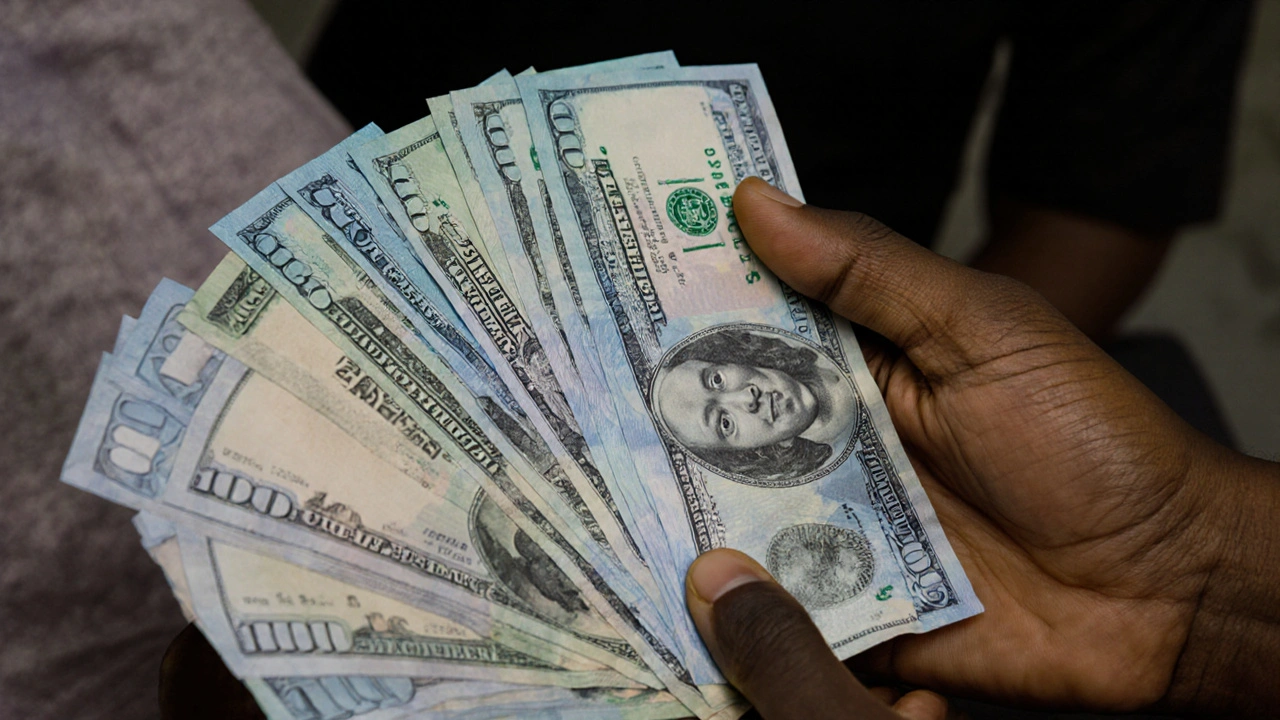US Dollar Rebounds After Powell’s Cautious Tone on Rate Cuts

Powell’s Cautious Message Sparks Dollar Recovery
When Fed chief Jerome Powell told markets he’s not rushing into easing, the US dollar didn’t stay down for long. After sliding to a one‑week low of 97.198 on the dollar index, the currency bounced back 0.35% to settle at 97.575 on Wednesday. That jump might seem modest, but it tells a story about how sensitive traders are to every Fed soundbite.
Powell’s remarks were clear: the Fed wants to avoid two big mistakes – loosening monetary policy too early and letting inflation stick, or keeping rates so tight that jobs disappear. He leaned on the data‑driven approach that guided last week’s 25‑basis‑point cut, but he stopped short of any dovish fanfare.
That tone sent ripples across the FX market. The greenback nudged up against the Japanese yen, climbing 0.29% to 148.07. The euro slipped 0.4% to $1.177, a move partly blamed on weak German Ifo business sentiment. Across the pond, sterling fell 0.3% to $1.3482. The only outlier was the Australian dollar, which rose 0.23% to $0.6614 after Australian CPI numbers showed inflation still humming at 3%.
Implications for Markets and Future Rate Outlook
Even with Powell’s measured stance, traders aren’t letting go of the rate‑cut narrative. CME’s FedWatch tool still shows a healthy market belief in two cuts for 2025 and an additional one in early 2026. However, the odds of an October 2024 cut have dipped after a string of more hawkish comments from other Fed officials.
This tug‑of‑war creates a tricky environment for investors. On the one hand, the dollar’s bounce signals that caution can temporarily outweigh optimism about easing. On the other, the broader expectation of future cuts keeps risk assets buoyant, especially in sectors that thrive on cheaper borrowing.
Real‑time data will be the referee. Inflation numbers, especially core CPI, and the jobs report will likely dictate whether Powell’s warning about premature easing turns into policy action. If price pressures stay above the Fed’s 2% target, the central bank may keep the tightening bias, even as the economy shows resilience.
Meanwhile, the eurozone faces its own challenges. The German Ifo index disappointed, dragging the euro lower despite relatively stable inflation in the area. British pound‑dollar dynamics remain tied to the Bank of England’s own rate‑cut timetable, which is still in a waiting game.
For the Aussie, the surprise CPI reading gave the Reserve Bank of Australia a bit more room to consider a rate hike later this year, reinforcing the currency’s rise against the dollar.
Analysts are also watching the bond market closely. Treasury yields have edged higher as investors balance the Fed’s caution with the lingering hope of easier money later on. Higher yields tend to support the dollar, which is reflected in the latest rebound.
All eyes remain on the Fed’s next press conference. Every pause, every inflection will be dissected for clues about the timing and scale of future easing. The dollar’s reaction to those clues will continue to be a bellwether for global risk sentiment.
In short, Powell’s speech didn’t rewrite the playbook, but it reminded markets that the Federal Reserve still runs on data, not on speculation. As long as that mantra holds, the greenback will keep reacting sharply to every hint of policy shift, while investors scramble to adjust their strategies accordingly.

simran grewal
September 27, 2025 AT 04:06Benjamin Gottlieb
September 27, 2025 AT 08:38Carolette Wright
September 27, 2025 AT 13:14Beverley Fisher
September 28, 2025 AT 09:43Anita Aikhionbare
September 29, 2025 AT 21:32Mark Burns
October 1, 2025 AT 00:16Angela Harris
October 2, 2025 AT 09:47Vinay Menon
October 3, 2025 AT 05:14jen barratt
October 4, 2025 AT 11:17Doloris Lance
October 6, 2025 AT 10:03